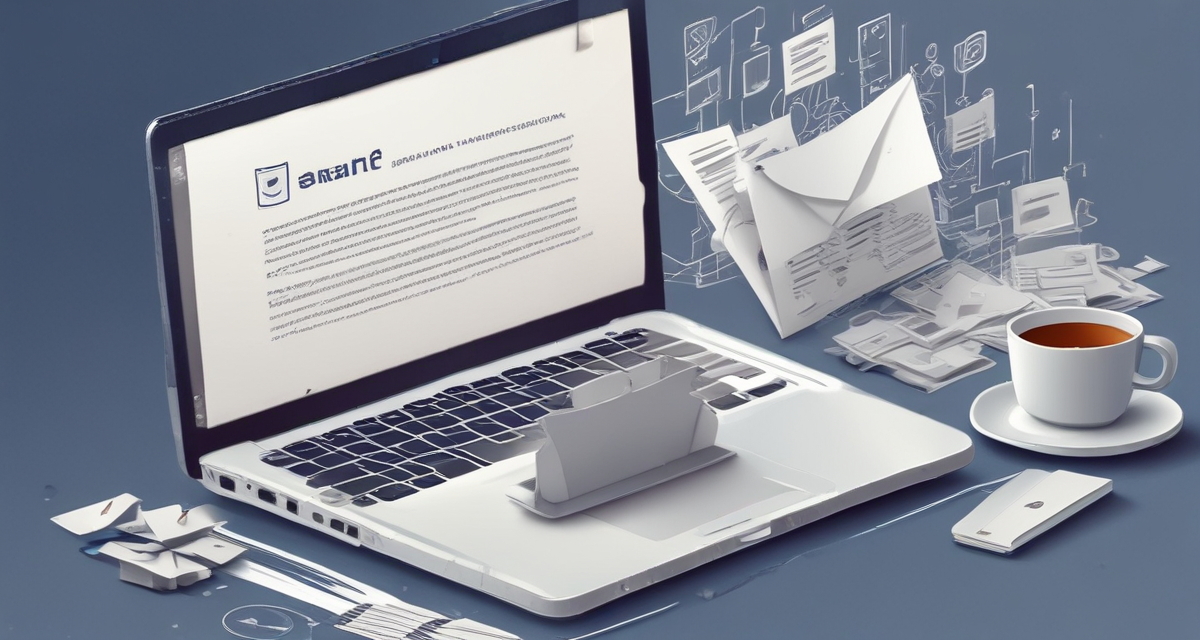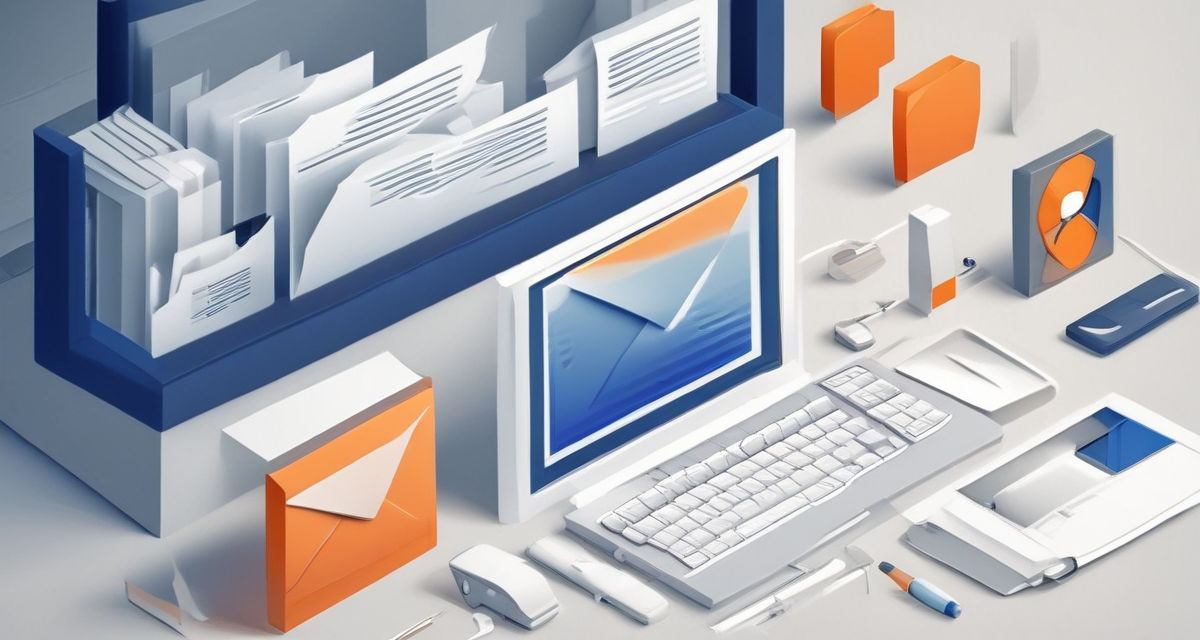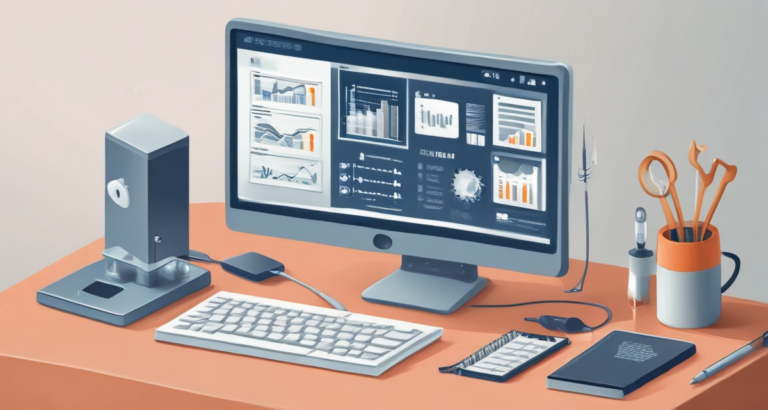Cold email outreach is a strategic tool for engaging potential clients and driving business growth.
Despite challenges like low response rates and spam filters, it offers a cost-effective, scalable, and direct way to communicate with decision-makers. This article will help you understand and optimize your cold email outreach efforts.
In this article, you will learn:
- How to craft effective subject lines
- Best practices for writing email copy
- Personalization techniques for higher engagement
Understanding Cold Email Outreach
Cold email outreach can be a powerful tool for businesses, especially SMEs looking to enhance their online presence. At HiBrand.art (HBA), we understand the nuances of this approach.
Cold email outreach is a strategic way to engage potential clients and drive business growth.
Unlike warm emails, cold emails are sent to potential clients who may have never heard of your business. This makes the approach challenging but also full of potential when done right. The goal is to break the ice, establish a connection, and eventually convert the recipient into a customer.
Why Cold Email Outreach?
Cold email outreach allows you to reach a broader audience without the limitations of social media algorithms or paid ads. It’s cost-effective and, when executed properly, can yield high
returns.
- Cost-effective: Minimal investment compared to other marketing channels.
- Scalable: Easily reach thousands of potential clients.
- Direct: Communicate directly with decision-makers.
Challenges to Consider
However, cold email outreach isn’t without its challenges. Here are some common issues:
- Low response rates: Many recipients may ignore your email.
- Spam filters: Emails can easily end up in the spam folder.
- Legal regulations: Compliance with GDPR and CAN-SPAM Act is crucial.
By understanding these challenges and employing best practices, you can increase the effectiveness of your cold email outreach
campaigns.
Best Practices
Here are some best practices to keep in mind:
- Research: Know your audience and tailor your message accordingly.
- Personalize: Make each email feel unique to the recipient.
- Follow up: Don’t be afraid to send follow-up emails.
Incorporating these strategies can significantly improve your success rate. At HiBrand.art, we specialize in helping businesses like yours craft effective cold email campaigns. With our expertise, you’ll be able to navigate the complexities of cold email outreach and achieve your marketing goals.
Crafting an Effective Subject Line
When it comes to cold email outreach, your subject line is the first impression. It’s the gateway to whether your email gets opened or tossed into the spam folder. An effective subject line can significantly increase your open rates and set the stage for a successful email campaign.
The subject line is the gateway to your cold email’s success.

So, what makes a subject line effective? Here are some key elements:
Keep It Short and Sweet
Aim for 6-10 words. Short subject lines are easier to read and more likely to catch the recipient’s attention. For example, “Quick Question” or “Meeting Next Week?” are concise yet engaging.
Personalize
Using the recipient’s name or company can make your email feel more tailored and less like spam. For instance, “Hi [Name], Quick Question” or “[Company], Let’s Collaborate” can make a big difference.
Create a Sense of Urgency
Words like “urgent,” “important,” or “last chance” can prompt immediate action. But be careful not to overdo it, or it might come off as pushy.
Ask a Question
Questions naturally pique curiosity. Try something like, “Are You Free for a Call?” or “Need Help with Your Marketing?” This invites the recipient to open the email to find out more.
Avoid Spammy Words
Words like “free,” “guarantee,” and “buy now” can trigger spam filters. Stick to professional language to ensure your email reaches the inbox.
Crafting an effective subject line is both an art and a science. By following these best practices, you can significantly improve your cold email outreach. HiBrand.art has years of experience in optimizing email campaigns, helping businesses like yours achieve better engagement and results.
Remember, the subject line is just the first step. Stay tuned for more tips on writing compelling email copy and personalization techniques.
Writing Compelling Email Copy
Creating compelling email copy is at the heart of successful cold email outreach. The key is to strike a balance between being persuasive and respectful of your recipient’s time.
The main idea: Effective cold email copy balances persuasion with respect for the recipient’s time.

Your email needs to be clear, concise, and personalized. Start with a strong opening line that grabs attention. Use the recipient’s name and reference something specific to their business or industry. This shows you’ve done your homework and aren’t sending a generic message.
Structuring Your Email
Follow a simple structure: greeting, introduction, body, and call to action. Here’s a breakdown:
- Greeting: Use the recipient’s name. Avoid generic terms like “Dear Sir/Madam.”
- Introduction: Briefly introduce yourself and your company. Mention how you found them or why you’re reaching out.
- Body: Explain the purpose of your email. Highlight the benefits they’ll gain from engaging with you. Keep it short and to the point.
- Call to Action: End with a clear and simple request. Whether it’s scheduling a call or visiting a website, make it easy for them to respond.
HiBrand.art (HBA) specializes in creating cold email copy that resonates with your target audience, boosting engagement and response rates.
Examples and Best Practices
Consider these examples:
- Example 1: “Hi [Name], I noticed your recent post about [Topic]. At HiBrand.art, we specialize in [Service], which could help you achieve [Benefit]. Can we schedule a call to
discuss?” - Example 2: “Hi [Name], I came across [Company] while researching [Industry]. We’ve helped similar companies like [Example] improve their [Metric]. Could we discuss how we can help you?”
Remember, keep your language simple and avoid jargon. Use active voice to make your message more dynamic and engaging.
Using Personalization Techniques
Personalization goes beyond using the recipient’s name. Reference their recent activities, achievements, or pain points. Tools like CRM systems can help gather this information.
For instance, if your recipient recently launched a new product, mention it and offer a relevant solution or compliment. This shows genuine interest and increases the likelihood of a response.
Measuring Success and Optimizing
Track metrics like open rates, response rates, and conversion rates to gauge your email campaign’s success. Use A/B testing to find what works best. Adjust your copy based on the data.
By following these best practices, you can craft compelling email copy that not only captures attention but also drives engagement. HiBrand.art is here to help you refine your approach and achieve your marketing goals.
Personalization Techniques
Personalization is the cornerstone of effective cold email outreach. Tailoring your messages to the recipient’s needs and interests significantly increases the chances of your email being opened and acted upon. By understanding your audience and
incorporating personalized elements, you can make your emails stand out in a crowded inbox.
Personalized emails are more likely to engage recipients and drive higher response rates.

There are several techniques to personalize your cold emails effectively:
Research Your Recipients
Take the time to understand who you’re reaching out to. Use LinkedIn, company websites, and social media to gather information about the recipient’s role, interests, and recent activities. Mentioning specific details in your email can make it more relevant and engaging.
Use Their Name
Always address the recipient by their name. This small gesture can make a big difference in how your email is perceived. Avoid generic greetings like “Dear Sir/Madam” or “To Whom It May Concern.”
Reference Their Company
Mention the recipient’s company and, if possible, a specific project or achievement. This shows that you’ve done your homework and are genuinely interested in their business. For example, “I was impressed by your recent product launch and would love to discuss how we can help you scale further.”
Include Relevant Content
Share content that is relevant to the recipient’s industry or role. This could be a recent blog post, a case study, or a whitepaper. Providing valuable information can establish you as a knowledgeable and helpful contact.
Personalize Your Call to Action
Instead of using a generic call to action, tailor it to the recipient’s needs. For example, “I’d love to schedule a call to discuss how we can help you improve your email marketing
strategy.”
Use Dynamic Fields
If you’re sending emails at scale, use email marketing tools that allow for dynamic fields. These fields can automatically insert personalized information, such as the recipient’s name, company, or recent activity, making each email feel unique.
Test and Optimize
Personalization is not a one-size-fits-all approach. Test different personalization techniques to see what resonates most with your audience. Track your open and response rates to identify what works best and continuously optimize your strategy.
At HiBrand.art, we specialize in helping businesses develop personalized cold email campaigns that drive engagement and
conversions. By leveraging our expertise, you can navigate the complexities of email marketing and achieve your business goals.
Measuring Success and Optimizing
Measuring the success of your cold email outreach is crucial for continuous improvement. It involves tracking various metrics to understand what works and what doesn’t. By doing so, you can fine-tune your approach and achieve better results.
Firstly, open rates are an essential metric. They tell you how many people opened your email. A low open rate might indicate that your subject line needs tweaking.
Secondly, click-through rates (CTR) show how many recipients clicked on links within your email. A high CTR indicates that your content is engaging and relevant.
Next, pay attention to conversion rates. This metric measures how many recipients took the desired action, like signing up for a webinar or making a purchase. It directly reflects the effectiveness of your email copy and call to action.
Don’t forget to monitor response rates. These indicate how many recipients replied to your email. High response rates can suggest that your email was compelling and
well-targeted.
To optimize your campaigns, follow these steps:
- Analyze the data regularly.
- Test different subject lines and email copy.
- Segment your audience for targeted messaging.
- Use A/B testing to compare different versions of your emails.
- Adjust your strategy based on the insights gained.
HiBrand.art can assist you in measuring and optimizing your cold email campaigns. Our expertise ensures you achieve your marketing goals efficiently.
Ready to elevate your email outreach? Contact HiBrand.art today and let us help you succeed!




